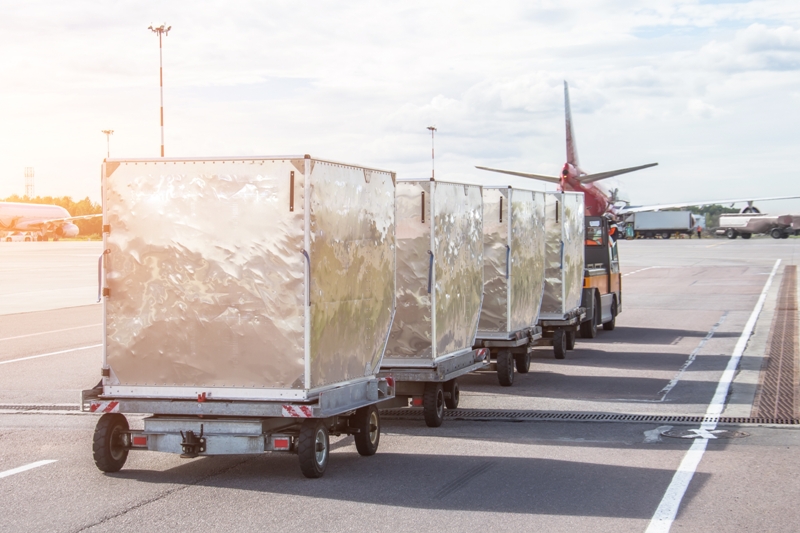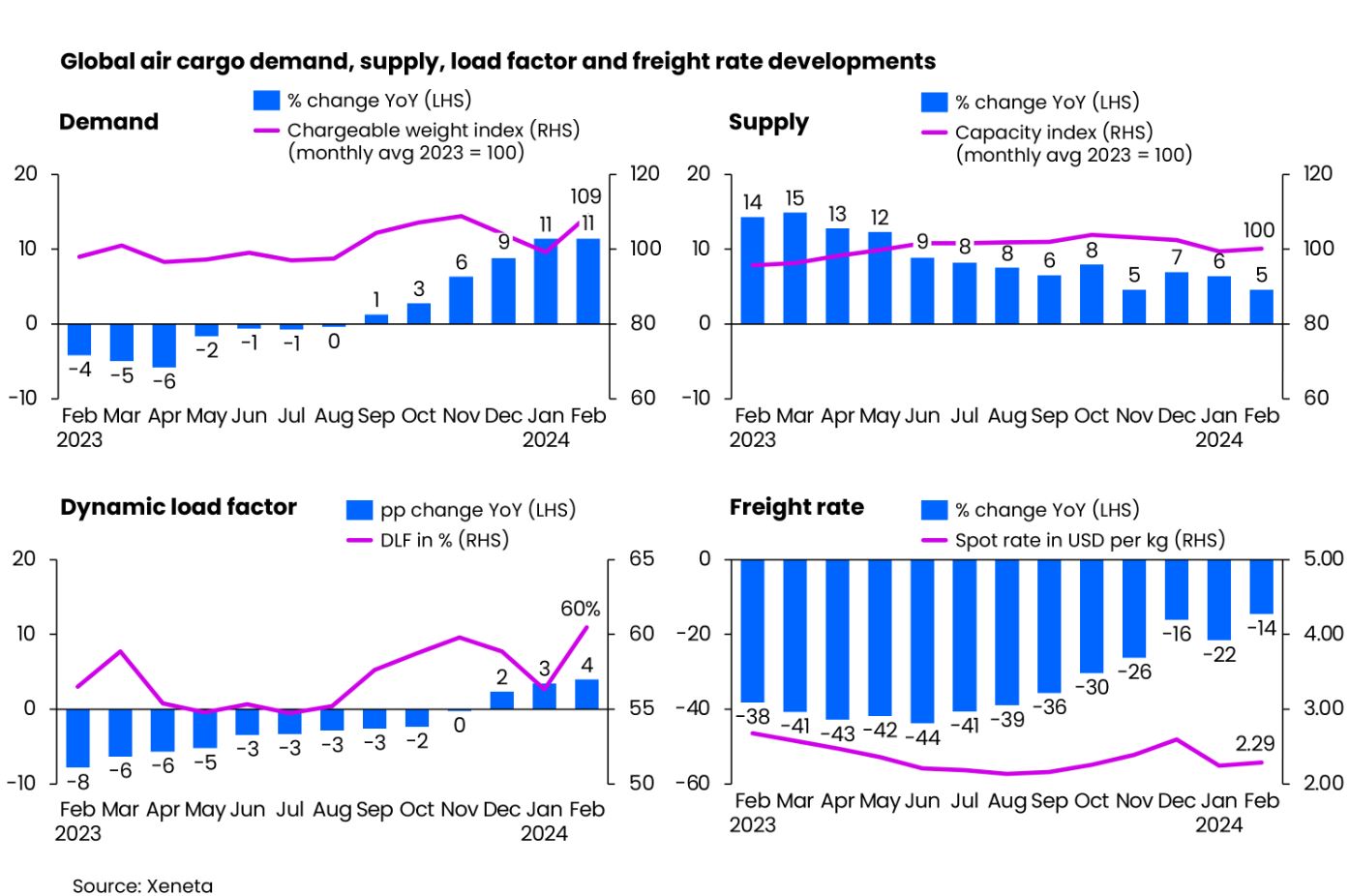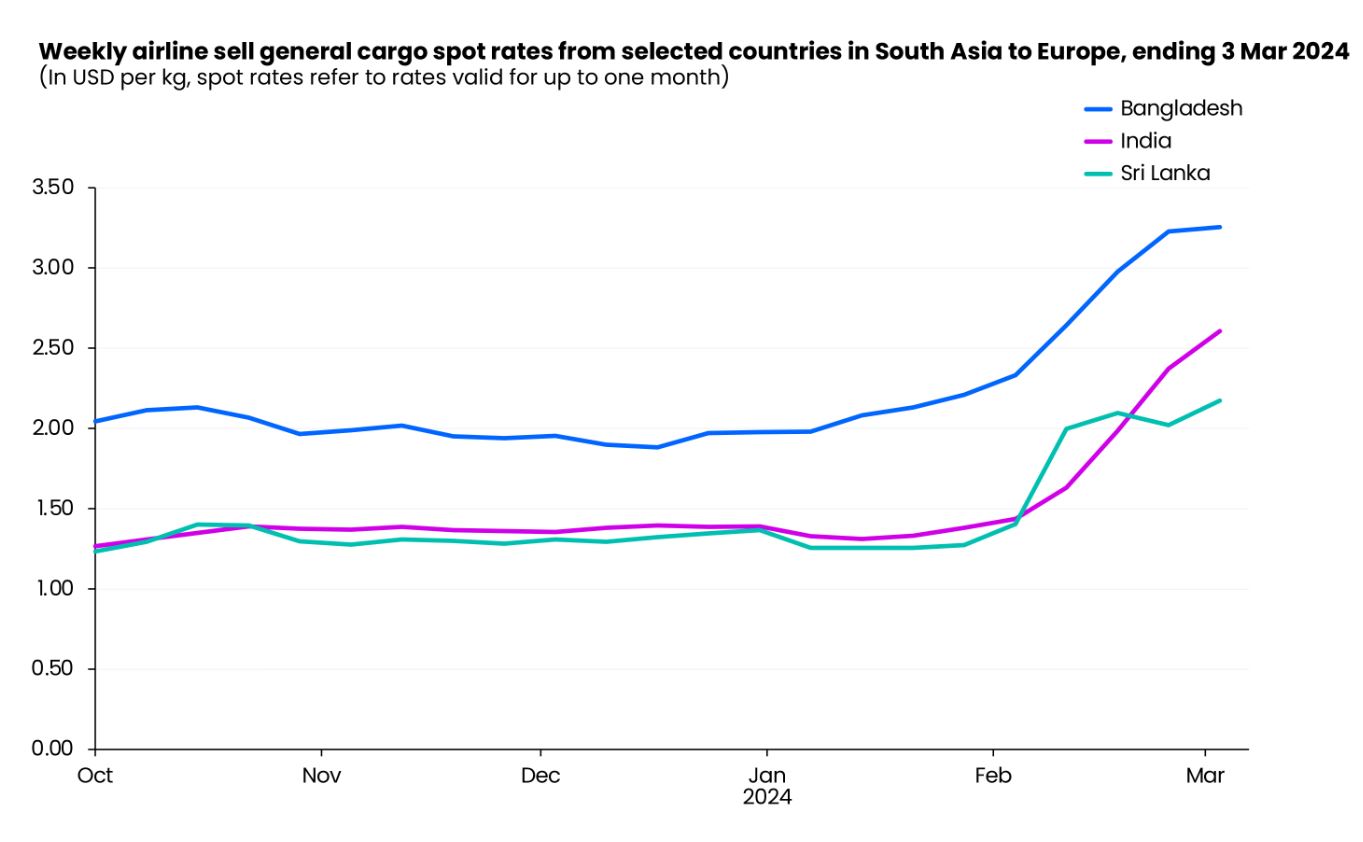Air cargo’s “surprisingly” strong start to 2024 continues in February
07 / 03 / 2024

Credit: Shutterstock
The air cargo market reported another double-digit percentage increase in demand in February continuing a “surprisingly strong” strong start to the year as e-commerce boosted demand levels.
The latest figures from data provider Xeneta show that air cargo demand increased by 11% year on year in February, while the dynamic load factor improved by four percentage points on a year ago to 60%.
Rates were down 14% on a year ago at $2.29 per kg but “unusually” improved by 2% on January’s levels.
Air cargo spot rates tend to decline following the year-end peak season in the previous year and in the period immediately after the Lunar New Year, before rebounding towards the year-end holiday seasons this year, Xeneta explained.
The data provider said the increases were likely driven by rising e-commerce demand as well as some overspill from ocean due to the Red Sea shipping crisis, which even saw some sea-air hubs add short-term embargos to clear backlogs.
Xeneta chief airfreight officer Niall van de Wouw said: “It’s a surprising start to the year from a volume perspective and not something people would have expected, ourselves included, with demand much higher than it was a year ago.
“Generally, we wouldn’t expect to see a rate uptick at this time of year. This is likely related to the Red Sea disruption, but this is not the only factor.”
“Signals suggest inflation is not cooling because consumers are still spending. It’s not how much they are spending that’s boosting airfreight, it’s where they are spending. Trends indicate more consumers are buying on e-commerce platforms and the intercontinental nature of these businesses, as well as the speed with which they are expected to deliver, is benefiting air cargo. For some airlines, e-commerce now makes up over 50% of their revenue ex-East Asia.
“We now wait to see what impact the airline’s summer schedules will have as well as what happens next in the Red Sea. We would certainly expect to see a downward pressure again on rates once the summer belly capacity returns in the western hemisphere as well as China, where the travel recovery is by no means yet done.”
Xeneta said that ocean schedule reliability for Asia to Europe trades dropped to 39.4% in January, the lowest level since October 2022, according to Sea Intelligence.
“This has further contributed to the strong increase in air cargo demand on this corridor for shippers willing and able to bear the higher cost of airfreight to maintain the resilience of their supply chains,” Xeneta explained.

Source: Xeneta
Market focus
The South Asia to Europe market led the month-over-month growth in spot rates in February as the situation in the Red Sea caused air cargo demand on this trade to rise by 18% from the previous month.
“Consequently, the average spot rate from South Asia to Europe increased by 34% month over month to $2.15 per kg in February.”
“Looking at the general cargo market at a country level, India, Bangladesh, and Sri Lanka experienced significant increases in their general cargo spot rates, which rose by a considerable 81%, 40%, and 55% respectively in the week ending on March 3, compared to four weeks earlier, driven by strong demand for apparel products from these markets.
“Similar to the outbound South Asia market, the average spot rate from China to Europe rose by a more modest 11% month over month to $3.67 per kg in February – but, the week-long Lunar New Year holidays caused a 9% decrease in the spot rate to $3.47 per kg in the week ending 3 March.”
Spot rates from China to the US were up 15% from January but weakened slightly as the month drew to a close.
Meanwhile, van de Wouw reports that shippers are looking to avoid the larger e-commerce hubs to avoid being caught up in any backlogs.
“Our conversations with shippers suggests many are looking to derisk their supply chains by avoiding hubs which are now so dominated by e-commerce behemoths,” he said.
“This comes down to simple math for shippers. If you’re a clothing retailer, with spring on the way in Europe, you want your seasonal products in-store for the peak demand period.
“If they’re stuck in a sea container because of longer lead times, and you miss this opportunity, the subsequent mark down in the product cost is likely greater than the cost of switching from sea to airfreight. This is shaping the market – but we also know the market will probably surprise us again in the coming weeks.”














